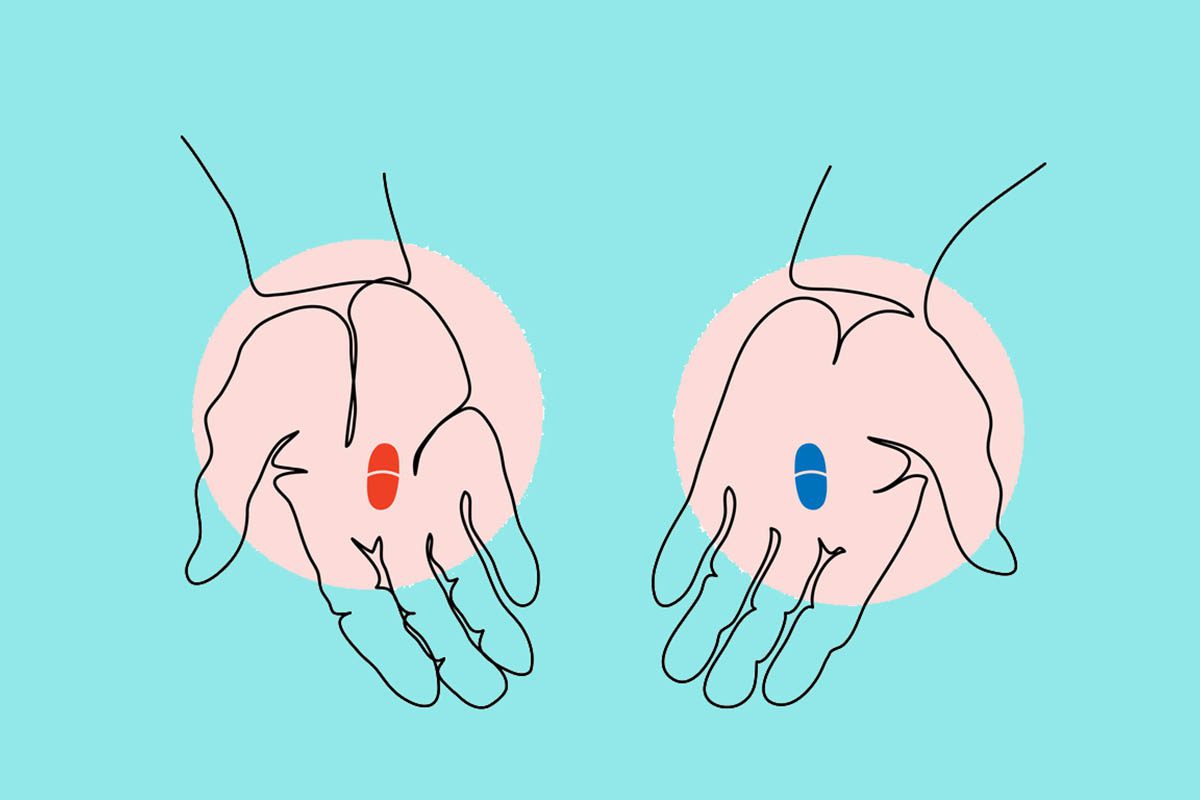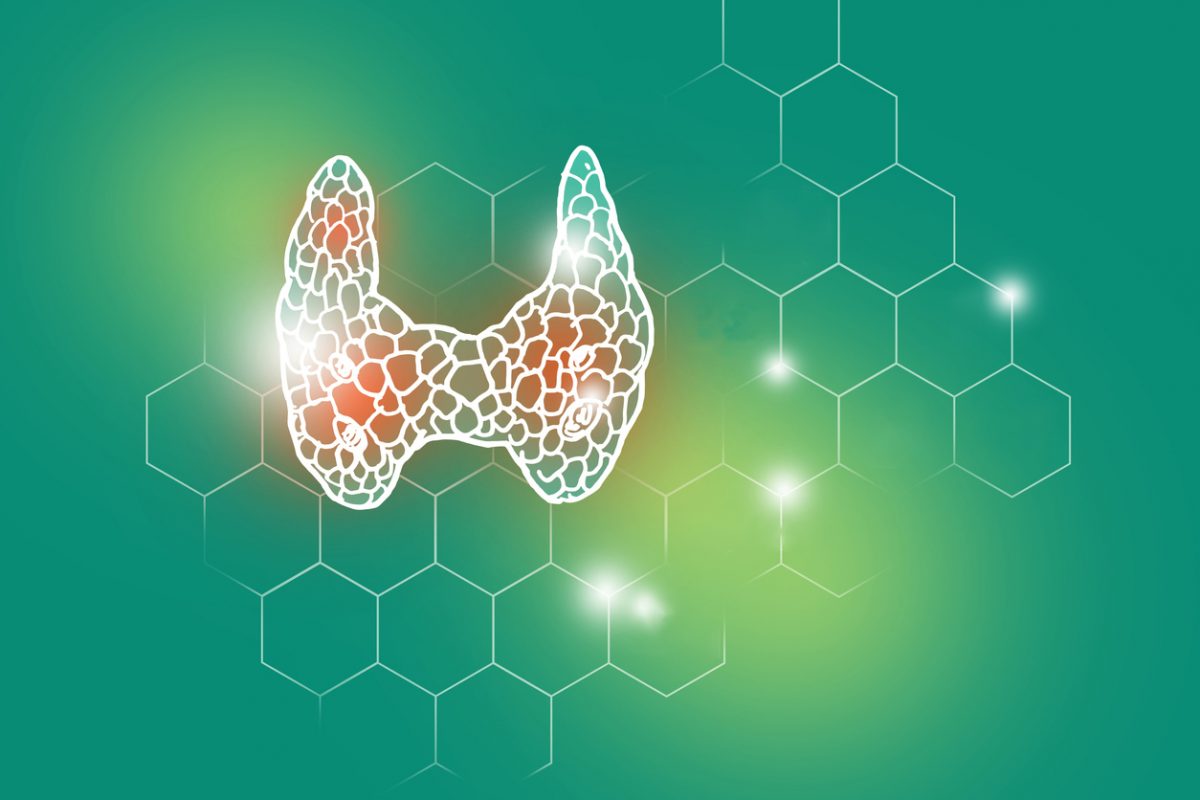

The search for simple answers in psychiatry knows no bounds. As a field, we have spent decades searching for the kind of 1-to-1 correspondence between mechanism and disorder that so many other fields of medicine enjoy. Twenty years ago, the proposal that major depressive disorder (MDD) might be an inflammatory disorder would have been considered a fringe proposition at best; today, it has become quite the rage to view MDD as just this type of immune condition. Perhaps, then, hyperactivity of the inflammatory arm of the immune system might provide exactly the type of unifying explanatory hypothesis for the pathogenesis of depression that we so badly crave. This possibility seems an excellent place to start this article, because it is almost certainly wrong.
Is Depression an Inflammatory Disorder?
Although inflammation can cause depression, MDD is not an inflammatory condition in the same way as are diseases in which there is a necessary and sufficient 1-to-1 correspondence between inflammation and pathology. Instead, what many studies have reported, and what has now been supported by several meta-analyses, is that groups of depressed people have higher mean levels of a number of peripheral inflammatory biomarkers than do groups of nondepressed individuals.1,2 The biomarkers most reliably increased in MDD include the cytokines tumor necrosis factor (TNF)-α and interleukin (IL)-6 and the acute-phase reactant C-reactive protein (CRP). In addition to these oft-replicated findings, individual studies have reported increases in almost every known measure of peripheral inflammation.3
Innumerable animal studies demonstrate that peripheral inflammation stimulates inflammatory activity in the central nervous system (CNS),4 although the degree to which this results from activation of resident microglial cells or the translocation of peripheral immune cells into the CNS remains an area of debate.5 The question of whether the increased peripheral inflammation seen in depression also reflects a concomitant elevation in CNS inflammation remains largely unanswered, although several studies have suggested that CNS inflammatory activity is indeed increased in MDD.6,7 Nonetheless, despite these types of sporadic reports, one of the great unanswered questions regarding the role of inflammation in MDD is the degree to which indices of increased peripheral inflammation seen in the disorder indicate a concomitant increase in immune activation within the CNS. Again, although animal models would suggest that this must surely be the case, the data that would confirm this in humans are for the most part strikingly absent.
Is There an “Inflammatory Subgroup” and Who Are They?
The reason groups of people with MDD have elevated levels of inflammation is not because each one of them is slightly more inflamed than people in nondepressed comparison groups. Rather, the range of inflammatory values is typically greater in the depressed than the nondepressed group, meaning that many depressed individuals have levels of inflammation as low as, or lower than, most of the nondepressed individuals with whom they are compared in any given study.8 The reason that MDD is associated with increased inflammation is almost always because there are more individuals with high levels of inflammation in the depressed population than there are in the control population.
Although no clear “cut-point” exists between depressed people with and without elevated inflammation (ie, values fall along a continuum), recent data suggest that the role of immune processes in disease pathogenesis varies greatly between those whose depression is and is not associated with elevated inflammation. To definitively test whether proinflammatory cytokines play a role in depression, we randomly assigned 60 medically healthy adults with treatment-resistant MDD to 3 infusions with either the TNF-α antagonist infliximab or a saltwater placebo and followed these subjects for 12 weeks to evaluate changes in depressive symptom severity.9 Infliximab showed no overall antidepressant effect, but a strong linear correlation was observed between pretreatment levels of the inflammatory biomarker CRP and subsequent antidepressant responses: the higher the level of inflammation, the more infliximab outperformed placebo. In individuals with high-sensitivity CRP levels above 5 mg/L, infliximab showed an effect-size separation from placebo similar to that seen with standard antidepressants and impacted a wide range of depressive symptoms, strongly suggesting that inflammatory cytokines are relevant for all depressive phenomena and not just symptoms such as fatigue and anorexia that are also seen in sickness. On the other hand, in individuals with MDD and low levels of inflammation, placebo significantly outperformed infliximab.
These findings suggest not that immune processes are irrelevant for those with MDD and low levels of inflammation, but rather that the effects of inflammation on CNS functioning are bivalent.10 Indeed, cytokines may actually have antidepressant properties when concentrations are low, while having a “hair-trigger” for promoting depression when their levels rise in response to infection, stress, or other conditions known to stimulate inflammation. If confirmed, a clear implication of this idea is that while anti-inflammatory strategies may hold promise for the treatment of depressed individuals with chronically elevated inflammatory biomarkers, they are unlikely to be a panacea for MDD more generally.
Acknowledging that no clear line of demarcation exists to separate inflamed from noninflamed cases of MDD, it remains of great interest to ask what we know about the subgroup of depressed individuals with chronically elevated inflammatory biomarkers. What are their distinguishing characteristics? Because multiple aspects of the modern world that are risk factors for depression also promote inflammatory activity,3 there are likely innumerable pathways whereby individuals might find themselves in the “inflammatory subtype.” However, 3 features of the link between inflammation and depression are especially relevant, both for their ubiquity and for their clinical relevance. These are early life adversity (ELA), obesity, and treatment resistance.
First, the association between depression and inflammation may be—to a large degree—epiphenomenal to more intrinsic links between ELA and immune activation, as well as between ELA and depression. Indeed, adults with prospectively assessed ELA demonstrate higher levels of various peripheral inflammatory biomarkers than do individuals with MDD but without ELA.11 In addition to programming the brain/body complex to run inflammatory pathways “hot” across the lifespan (likely reflecting a phylogenetically ancient program evolved to protect animals born in vulnerable situations from the heightened risk for infection they would be likely to encounter as adults), ELA may also make individuals more sensitive to the depressogenic effects of inflammation. For example, increased plasma concentrations of IL-6 predicted elevated depressive symptoms 6 months later in adolescent girls at high family risk for depression who also had experienced ELA, but not in girls similarly at family risk but lacking an ELA history.12 Said differently, for any given level of inflammation, individuals with ELA are more likely to develop depression. This notion is supported by studies using the inflammatory cytokine interferon (IFN)-α that have reported that multiple baseline behavioral and biological factors make different individuals more or less vulnerable to the development of depression at any given dose of inflammatory exposure.13 We3 and others14 have argued that by inducing symptoms and behaviors likely to enhance host pathogen defense and/or pathogen avoidance, this heightened proclivity to depression in response to inflammation may have served adaptive purposes.
It is now widely understood that obesity—and especially abdominal obesity—is a proinflammatory condition. Not surprisingly, therefore, recent studies document that obesity is also a risk factor for the future development of depression and that inflammatory processes play a role in this process.15-18 Amid the myriad studies examining associations between depression and inflammation, the impact of obesity looms large. While many studies have reported independent associations between depression and inflammatory biomarkers, others have observed the association evaporate when they adjust for the influence of BMI.19 A parsimonious explanation for this pattern of findings might be that obesity is one, but only one, gateway into the development of “inflammatory depression.” Interestingly, as with ELA, some evidence suggests that obesity may sensitize individuals to the depressogenic effects of inflammation.20 It is also important to emphasize that although we have described ELA and obesity as separate pathways, in fact ELA is a powerful predictor of adult obesity, and so these 2 pathways are in fact both phenomenologically and biologically linked.21
An important clinical hallmark of depressed individuals with increased inflammation is that they are less likely than others to respond to treatment with either standard antidepressants or psychotherapy22-24 and, on the basis of our infliximab trial, are much less likely to demonstrate a placebo response.9 Conversely, they appear to be more likely than depressed individuals with low levels of inflammation to show a clinical response to cytokine blockade. Multiple factors likely contribute to the association between increased inflammation and reduced antidepressant responsiveness.25 Less is known about why cytokines may antagonize the therapeutic effects of psychotherapy, but it is intriguing that acute cytokine induction with lipopolysaccharide produces feelings of social isolation26 and that chronically elevated inflammatory biomarkers impede placebo responsiveness. Taken together, these results point to the possibility that inflammatory cytokines disrupt psychosocial cognitive and affective processes on which psychotherapy depends.
Finally, it should be emphasized again that ELA, obesity, and treatment resistance are not separate conditions but appear to be highly interrelated at all levels, forming an unfortunate trifecta of trouble for clinicians grappling with depression. Just as ELA promotes both obesity and inflammation, animal studies suggest that chronic inflammation promotes obesity, and genes that make individuals vulnerable to ELA also in general have proinflammatory effects.27,28 And, just as with inflammation, both ELA and obesity have repeatedly been associated with treatment resistance.29
The Future of Anti-Inflammatories for the Treatment of MDD
If there is a bright side to the difficult associations between environmental risk factors, inflammation, and treatment resistance, it might be that treatment strategies that directly target inflammatory processes may be especially efficacious in the context of “inflammatory depression.” Indeed, in addition to data suggesting that TNF-α antagonism may have antidepressant properties in individuals with MDD and increased inflammation, a number of small studies suggest that other anti-inflammatory strategies may also hold promise. Two small randomized trials30,31 suggest that the COX-2 inhibitor celecoxib may augment standard antidepressants, and open trials point to potential therapeutic efficacy for the microglia-inhibitor minocycline, as well as for aspirin.32,33 However, it is important to emphasize that these trials are provisional at best and did not stratify patients by baseline inflammation, leaving unanswered the key question of who, in the years to come, might be most likely to benefit from strategies that target the immune system.
Author affiliations: Department of Psychiatry, College of Medicine and Norton School of Family and Consumer Sciences, College of Agriculture and Life Sciences, University of Arizona, Tucson.
Potential conflicts of interest: In the last 12 months, Dr Raison has been a consultant for Pamlab and Eli Lilly; received honoraria from Pamlab and Sunovion; served on the speakers bureau for Pamlab, Eli Lilly, and Sunovion; and developed and presented CME material for North American Center for Continuing Medical Education (NACCME) and CME Incite. Dr Raison serves on the steering committee for NACCME, and his wife has been an employee of INSYS.
Funding/support: Funding for this article came from Barry and Janet Lang.
Corresponding author: Charles L. Raison, MD, University of Arizona, Frances McClelland Institute, Tucson, AZ 85724 ([email protected]).
REFERENCES
1. Howren MB, et al. Psychosom Med. 2009;71(2):171-186. PubMed doi:10.1097/PSY.0b013e3181907c1b
2. Dowlati Y, et al. Biol Psychiatry. 2010;67(5):446-457. PubMed doi:10.1016/j.biopsych.2009.09.033
3. Raison CL, Miller AH. Mol Psychiatry. 2013;18(1):15-37. PubMed doi:10.1038/mp.2012.2
4. Dantzer R, et al. Nat Rev Neurosci. 2008;9(1):46-56. PubMed doi:10.1038/nrn2297
5. Miller AH. Brain Behav Immun. 2010;24(1):1-8. PubMed doi:10.1016/j.bbi.2009.09.009
6. Shelton RC, et al. Mol Psychiatry. 2011;16(7):751-762. PubMed doi:10.1038/mp.2010.52
7. Steiner J, et al. J Neuroinflammation. 2011;8(1):94. PubMed doi:10.1186/1742-2094-8-94
8. Raison CL, Miller AH. Curr Psychiatry Rep. 2011;13(6):467-475. PubMed doi:10.1007/s11920-011-0232-0
9. Raison CL, et al. JAMA Psychiatry. 2013;70(1):31-41. PubMed doi:10.1001/2013.jamapsychiatry.4
10. Yirmiya R, Goshen I. Brain Behav Immun. 2011;25(2):181-213. PubMed doi:10.1016/j.bbi.2010.10.015
11. Danese A, et al. Arch Gen Psychiatry. 2008;65(4):409-415. PubMed doi:10.1001/archpsyc.65.4.409
12. Miller GE, Cole SW. Biol Psychiatry. 2012;72(1):34-40. PubMed doi:10.1016/j.biopsych.2012.02.034
13. Udina M, et al. J Clin Psychiatry. 2012;73(8):1128-1138. PubMed doi:10.4088/JCP.12r07694
14. Anders S, et al. Brain Behav Immun. 2013;31:9-22. PubMed doi:10.1016/j.bbi.2012.12.002
15. Pan A, et al. Int J Obes (Lond). 2012;36(4):595-602. PubMed doi:10.1038/ijo.2011.111
16. Capuron L, et al. Psychol Med. 2011;41(7):1517-1528. PubMed doi:10.1017/S0033291710001984
17. Capuron L, et al. Biol Psychiatry. 2008;64(10):896-900. PubMed doi:10.1016/j.biopsych.2008.05.019
18. Shelton RC, Miller AH. Prog Neurobiol. 2010;91(4):275-299. PubMed doi:10.1016/j.pneurobio.2010.04.004
19. O’ Connor MF, et al. Brain Behav Immun. 2009;23(7):887-897. PubMed doi:10.1016/j.bbi.2009.04.005
20. Miller GE, et al. Am J Cardiol. 2002;90(12):1279-1283. PubMed doi:10.1016/S0002-9149(02)02863-1
21. Danese A, et al. Arch Pediatr Adolesc Med. 2009;163(12):1135-1143. PubMed
22. Vogelzangs N, et al. Inflammatory and metabolic dysregulation and the 2-year course of depressive disorders in antidepressant users [published online ahead of print January 20, 2014]. Neuropsychopharmacology. PubMed doi:10.1038/npp.2014.9
23. Yoshimura R, et al. Prog Neuropsychopharmacol Biol Psychiatry. 2009;33(4):722-726. PubMed doi:10.1016/j.pnpbp.2009.03.020
24. Harley J, et al. J Psychopharmacol. 2010;24(4):625-626. PubMed doi:10.1177/0269881109102770
25. Haroon E, et al. Neuropsychopharmacology. 2012;37(1):137-162. PubMed doi:10.1038/npp.2011.205
26. Eisenberger NI, et al. Brain Behav Immun. 2010;24(4):558-563. PubMed doi:10.1016/j.bbi.2009.12.009
27. Fredericks CA, et al. Brain Behav Immun. 2010;24(3):350-357. PubMed doi:10.1016/j.bbi.2009.10.014
28. Su S, et al. Circ Cardiovasc Genet. 2009;2(6):614-620. PubMed doi:10.1161/CIRCGENETICS.109.870386
29. Kloiber S, et al. Biol Psychiatry. 2007;62(4):321-326. PubMed doi:10.1016/j.biopsych.2006.10.001
30. Akhondzadeh S, et al. Depress Anxiety. 2009;26(7):607-611. PubMed doi:10.1002/da.20589
31. M×¼ller N, et al. Mol Psychiatry. 2006;11(7):680-684. PubMed doi:10.1038/sj.mp.4001805
32. Miyaoka T, et al. Prog Neuropsychopharmacol Biol Psychiatry. 2012;37(2):222-226. PubMed doi:10.1016/j.pnpbp.2012.02.002
33. Mendlewicz J, et al. Int Clin Psychopharmacol. 2006;21(4):227-231. PubMed doi:10.1097/00004850-200607000-00005
J Clin Psychiatry 2014;75(6):663-664 (doi:10.4088/JCP.14ac09217)
© Copyright 2014 Physicians Postgraduate Press, Inc.




